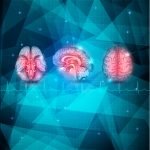Cortisol & Depression Identifying Pattern Differences
James L. Wilson, ND, PhD
The World Health Organization lists depression as one of the leading causes of disability worldwide.1 It is well known that stress can precipitate major depression and influence its incidence, severity, and course.2 It is also known that many of the features of major depression potentially reflect dysregulation of the stress response within the hypothalamic-pituitary-adrenal (HPA) axis.3 There are a number of clinical conditions in which depression and cortisol (a prime adrenal hormone) are associated but the HPA axis pattern differs from that of major depression. These conditions include but are not limited to post-traumatic stress disorder,4 bipolar disorder,5 fibromyalgia, chronic fatigue syndrome,6 functional gastrointestinal disorders,7 early sexual abuse,8 Cushing’s syndrome,9-11 Addison’s disease,12,13 and adrenal fatigue.14 Due to space constraints, this article will focus on HPA axis function in major depression.
Major Depression
Major depression is a heritable disorder that affects approximately 8% of men and 15% of women.2 For over 75% of these patients, major depression is a recurrent, lifetime illness characterized by repeated remissions and exacerbations.15 Its effects extend beyond the psycho-emotional realm, to negatively influence neuroendocrine regulation, autonomic function, and the regulation of sleep, appetite, and metabolic activity.16,17 The long-term physiological impact of major depression has serious implications for health, including increased incidence of coronary artery disease,18-20 premature osteoporosis,21 and the doubling of all-cause mortality at any age.18-20
The Diagnostic and Statistical Manual of Mental Disorders IV (DSM-IV)16 – the principal diagnostic instrument used for psychiatric diagnosis in the United States – lists 2 distinct clinical major depressive syndromes that seem to be the antithesis of one another: melancholic and atypical depression. This distinction is based on their patterns of psychological and behavioral symptoms.22
Melancholic Depression
Melancholic depression is actually a state of pathological hyperarousal. Its psychological manifestations include intense anxiety; feelings of worthlessness; recollections of past transgressions, failures, and helplessness; dread of the future; and feelings of personal deficiency which color thought and affect.17,23 Severe melancholic depression has long been associated with consistently elevated levels of cortisol.24 Its physiological manifestations include hypercortisolemia, suppression of growth hormone and the reproductive axes, insomnia (most often early-morning waking), and loss of appetite. The melancholia is greatest early in the morning.23 Only 25 to 30% of patients with major depression present with pure melancholic features.17
Atypical Depression
Atypical depression, in many ways, is the opposite of melancholic depression. It is associated with a disturbing sense of disconnectedness and emptiness, punctuated by brief emotional reactions to external circumstances. People with atypical depression seem walled off from themselves and complain of cognitive and mental weariness. They tend to avoid others, often with a sense that contact would be too demanding, tiring, and poorly received. They present with lethargy, fatigue, excessive sleepiness, increased food intake, weight gain, and depressive symptoms that worsen as the day progresses.17 An estimated 15 to 30% of patients with major depression show pure atypical depression features17 – about half the frequency of melancholic depression. More recently, it has emerged that atypical depression is marked by paradoxically low cortisol levels.3
HPA Axis Patterns in Depression
The HPA axis functions differently in these 2 types of major depression. Melancholic depression occurs with an overall hyperactive HPA axis, including elevated corticotrophin-releasing hormone (CRH), adrenocorticotropic hormone (ACTH), and cortisol. In contrast, atypical depression occurs with an overall hypoactive HPA axis, with decreased CRH, ACTH and cortisol. Thus, although both are associated with major clinical depression, their presenting symptoms and neuroendocrine responses are nearly opposite. It is interesting to note that neither type of major depression shows the same HPA axis patterns as Cushing’s syndrome,25 Addison’s disease,5 or adrenal fatigue, which has an HPA axis pattern more closely resembling Addison’s than either of the major depression types.26
Although most patients with major depression can be classified as either melancholic or atypical, not all cases within a classification resemble one another.17 The majority of patients with major depression present with a mixture of cognitive, affective, and physiological features (referred to as a mixed neurovegetative type) and do not show clearly hyper or hypo HPA-axis function.17,22 However, those who do show a clear melancholic or atypical presentation and HPA-axis pattern have a much poorer outcome.17 In other words, those suffering from major clinical depression where the HPA axis is clearly disturbed in either an overactive or suppressed pattern, have a poorer prognosis.
Summary
In summary, depression is one of the most common health problems occurring worldwide. Cortisol – both high and low – has been closely associated with major depression in which 2 distinct clinical sub-types can be separated out: melancholic and atypical. Melancholic depression is more frequent and shows an overall elevated HPA-axis pattern with high cortisol as an end-point, whereas atypical depression shows an overall hyporeactivity of the HPA axis, manifesting as low cortisol. Neither pattern is identical to the HPA-axis responses seen in Cushing’s syndrome, Addison’s disease, or adrenal fatigue. Thus, there appear to be several response patterns associated with depression and cortisol. Therefore, once depression is diagnosed, the astute clinician should investigate HPA function further, to gain important information that will lead to a more accurate diagnosis and a more effective therapeutic outcome.
 James L. Wilson, ND, PhD, is the author of Adrenal Fatigue: The 21st Century Stress Syndrome, and is an internationally recognized lecturer and authority on stress. He holds 3 doctorates in different health fields (including a PhD in human nutrition, with minors in pharmacology, toxicology, and immunology) and has been in private practice for 26 years. Dr Wilson has helped thousands of healthcare practitioners learn how to recognize and treat adrenal fatigue and optimize adrenal function. In 2009, he established the non-profit Health Science Research Foundation, and is currently working on the interrelationship between adrenal pathways and nutrients. He is also the founder and product formulator of a line of dietary supplements and clinical solutions for stress, under the brand name Doctor Wilson’s Original Formulations. Dr Wilson is one of the founders of the Canadian College of Naturopathic Medicine, and has been a trailblazer for naturopathic medicine for over 3 decades.
James L. Wilson, ND, PhD, is the author of Adrenal Fatigue: The 21st Century Stress Syndrome, and is an internationally recognized lecturer and authority on stress. He holds 3 doctorates in different health fields (including a PhD in human nutrition, with minors in pharmacology, toxicology, and immunology) and has been in private practice for 26 years. Dr Wilson has helped thousands of healthcare practitioners learn how to recognize and treat adrenal fatigue and optimize adrenal function. In 2009, he established the non-profit Health Science Research Foundation, and is currently working on the interrelationship between adrenal pathways and nutrients. He is also the founder and product formulator of a line of dietary supplements and clinical solutions for stress, under the brand name Doctor Wilson’s Original Formulations. Dr Wilson is one of the founders of the Canadian College of Naturopathic Medicine, and has been a trailblazer for naturopathic medicine for over 3 decades.
References:
- Murray CJ. Evidence-based health policy – lessons from the global burden of disease study. Science. 1996;274(5288):740-743.
- Kessler RC, McGonagle KA, Zhao S et al. Lifetime and 12 month prevalence of DSM-III-R psychiatric disorders in the United States. Results from the National Comorbidity Survey. Arch Gen Psychiatry. 1994;51(1): 8-19.
- Yehuda R, Seckl J. Minireview: Stress-related psychiatric disorders with low cortisol levels: a metabolic hypothesis. Endocrinology. 2011;152 (12):4496-4503.
- Kanter ED, Wilkinson CW, Radant AD, et al. Glucocorticoid feedback sensitivity and adrenocortical responsiveness in posttraumatic stress disorder. Biol Psychiatry. 2001;50(4):238-245.
- Maripuu M, Wikgren M, Karling P, et al. Relative hypo- and hypercortisolism are both associated with depression and lower quality of life in bipolar disorder: a cross-sectional study. PLoSOne. 2014;9(6):e98682.
- Gur A, Cevik R, Nas K, et al. Cortisol and hypothalamic-pituitary-gonadal axis hormones in follicular-phase women with fibromyalgia and chronic fatigue syndrome and affective depressive symptoms on these hormones. Arthritis Res Ther. 2004;6(3):R232-R238.
- Ehlert U, Nater UM, Bohmelt A. High and low unstimulated salivary cortisol levels correspond to different symptoms of functional gastrointestinal disorders. J Psychosom Res. 2005;59(1):7-10.
- King JA, Mandansky D, King S, et al. Early sexual abuse and low cortisol. Psychiatry Clin Neurosci. 2001;55(1):71-74.
- Sonino N, Fallo F, Fava GA. Psychosomatic aspects of Cushing’s syndrome. Rev Endocr Metab Disord. 2010;11(2): 95-104.
- Sonino N, Fava GA. Psychosomatic aspects of Cushing’s disease. Psychother Psychosom. 1998;67(3):140-146.
- Sonino N, Fava GA. Psychiatric disorders associated with Cushing’s syndrome. Epidemiology, pathophysiology and treatment. CNS Drugs. 2001;15(5):361-373.
- Kaushik ML, Sharma RC. Addison’s disease presenting as depression. Indian J Med Sci. 2003;57(6):249-251.
- Tintera J. Hypocortisolism. 8th Printing. Adrenal Metabolic Research Society. Mt Vernon, NY; 1974.
- Wilson JL. Clinical perspective on stress, cortisol and adrenal fatigue. Advances in Integrative Medicine. 2014;1(2): 93-96.
- Frank E, Thase ME. Natural history and preventive treatment of recurrent mood disorders. Annu Rev Med. 1999;50:453-468.
- American Psychiatric Association. DSM-IV-TR. Diagnostic and Statistical Manual of Mental Disorders: DMS-IV. 4th Washington DC; 1994:886.
- Gold PW, Chrousos GP. Organization of the stress system and its dysregulation in melancholic and atypical depression: High versus low CRH/NE states. Mol Psychiatry. 2002;7(3):254-275.
- Barefoot JC, Schroll M. Symptoms of depression, acute myocardial infarction, and total mortality in a community sample. Circulation. 1996;93(11):1976-1980.
- Penninx BW, Geerlings SW, Deeg DJ, et al. Minor and major depression and the risk of death in older persons. Arch Gen Psychiatry. 1999;56(1):889-895.
- Pratt LA, Ford DE, Crum RM, et al. Depression, psychotropic medication, and risk of myocardial infarction. Prospective data from the Baltimore ECA follow-up. Circulation. 1996;94(12):3123-3129.
- Michelson D, Stratakis C, Hill L, et al. Bone mineral density in women with depression. N Engl J Med. 1996;335(16):1176-1181.
- Levitan R, Lesage A, Parikh SV, et al. Reversed neurovegetative symptoms of depression: a community study. Am J Psychiatry. 1997;154(7):934-940.
- Gold PW, Chrousos G. The endocrinology of melancholic and atypical depression: relation to neurocircuitry and somatic consequences. Proc Assoc Am Physicians. 1999;111(1): 22-34.
- Carroll BJ. The dexamethasone suppression test for melancholia. Br J Psychiatry. 1982;140: 292-304.
- Starkman MN, Schteingart DE, Schork MA. Depressed mood and other psychiatric manifestations of Cushing’s syndrome: relationship to hormone levels. Psychosom Med. 1981;43(1):3-17.
- Wilson JL. A case for adrenal fatigue or non-Addison’s hypoadrenia. AV presentation. July 16, 2012. Brisbane, Australia: Queensland’s College of Medicine.









